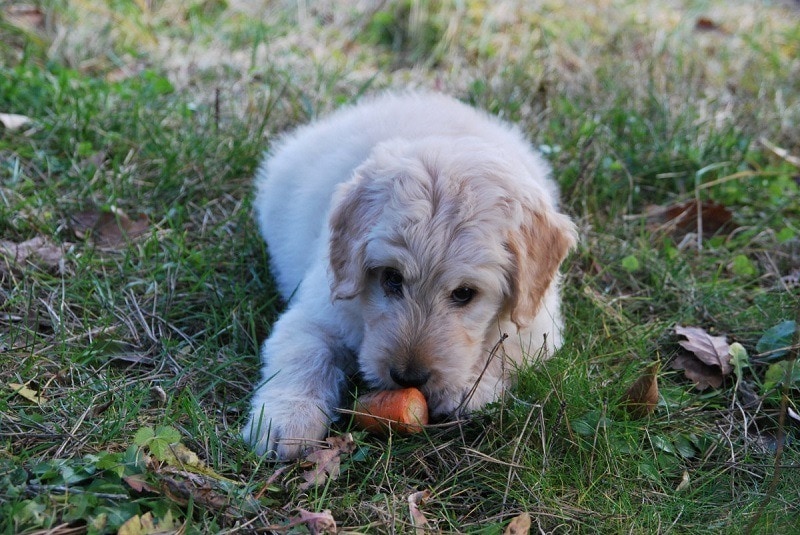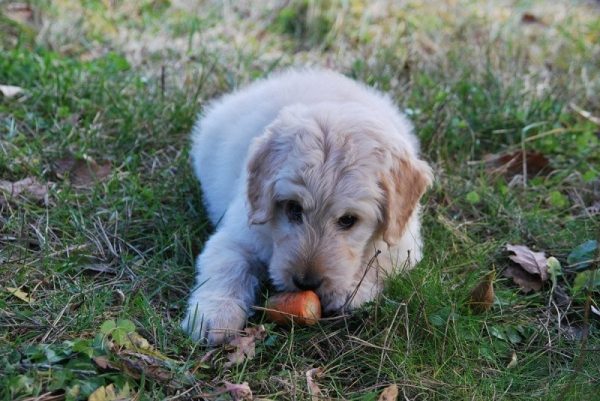Dogs can get diabetes just like humans can. It typically happens when they’re older, but if your pooch isn’t in good health, it can happen at any time. Providing your dog with a quality diet and ensuring that they get plenty of exercise every day can go a long way when it comes to protecting them from the development of diabetes.
However, no matter how well you’re doing as a dog parent, your pooch can still end up with diabetes. But diabetes isn’t a death sentence. Your veterinarian can work with you to create a special meal-and-care plan that helps your pooch stay happy and healthy as they age. You can also serve human foods to promote the health of your diabetic dog. Here are six foods to consider.
The 6 Human Foods to Feed a Diabetic Dog
1. Broccoli

| Calories Per Cup: | 31 |
| Fat Grams Per Cup: | 0.4 |
| Carbohydrate Grams Per Cup: | 6 |
Broccoli is full of fiber, which helps regulate blood sugar levels, and it’s low in fat, so it can help keep your dog’s weight under control. For a vegetable, broccoli has plenty of protein, too. Up to 29% of a stalk of broccoli’s dry weight is protein. Dogs can eat broccoli raw, steamed, or lightly sautéed, but no seasonings should be added. It’s always a good idea to cut the broccoli into small pieces before serving to avoid the risk of choking.
2. Cucumber
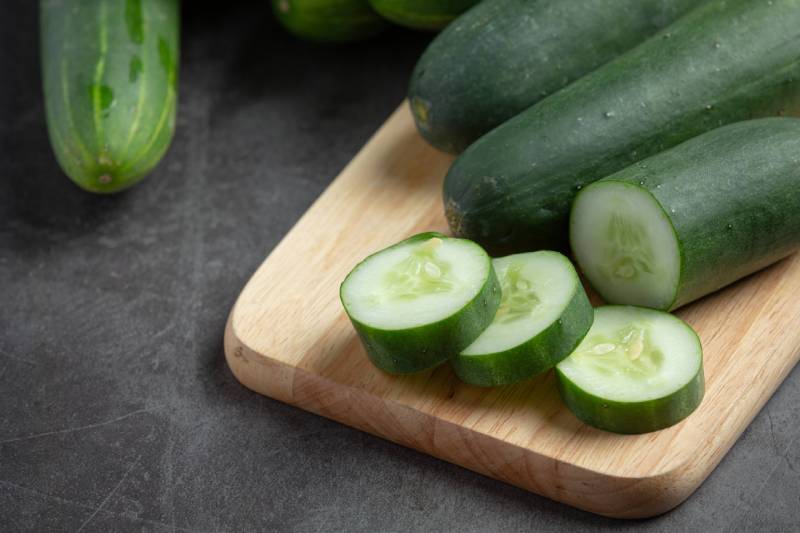
| Calories Per Cup: | 16 |
| Fat Grams Per Cup: | 0 |
| Carbohydrate Grams Per Cup: | 4 |
Cucumbers are excellent sources of antioxidants and contain anti-cancer properties. They are also considered anti-inflammatory, which can be beneficial to older dogs that experience problems like arthritis. Most dogs enjoy cucumbers because they don’t have much flavor yet are full of water, so they can help quench thirst.
3. Carrots

| Calories Per Cup: | 39 |
| Fat Grams Per Cup: | 0.1 |
| Carbohydrate Grams Per Cup: | 9.1 |
Carrots are great to give dogs in general because they contain beta-carotene and vitamin A, which are thought to lower the risk of developing diabetes as time goes on. Carrots also help keep the digestive system healthy and can even help strengthen the bones. They can be shredded and added to regular food or chopped and offered as treats. They can be served raw, roasted, sautéed, or steamed.
4. Blueberries

| Calories Per Cup: | 83 |
| Fat Grams Per Cup: | 0.5 |
| Carbohydrate Grams Per Cup: | 21 |
Blueberries are considered to be superfoods because of their high antioxidant content and ability to help manage diabetes. High in vitamin C, blueberries can help keep colds and other illnesses at bay. Some dogs like blueberries, and others don’t want anything to do with them. You can always hide them in your pooch’s treats or commercial food if they don’t seem interested in them as-is.
5. Plain Yogurt
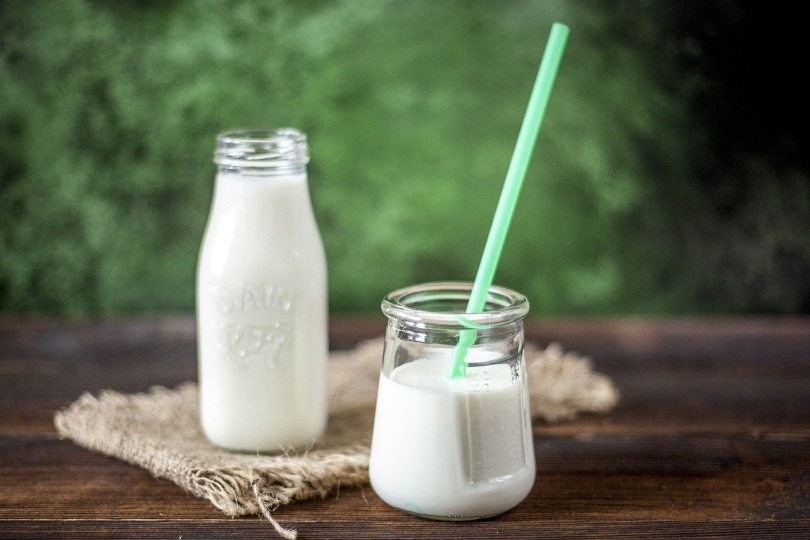
| Calories Per Cup: | 104 |
| Fat Grams Per Cup: | 3.8 |
| Carbohydrates Per Cup: | 17.25 |
Plain low-fat yogurt is a great option for diabetic dogs because it contains healthy amounts of calories, fat, protein, and fiber. It’s important to make sure there are no added sugars, such as high fructose corn syrup or cane sugar. Artificial ingredients of any kind, food coloring, and most preservatives should be avoided whenever possible.
6. Cauliflower
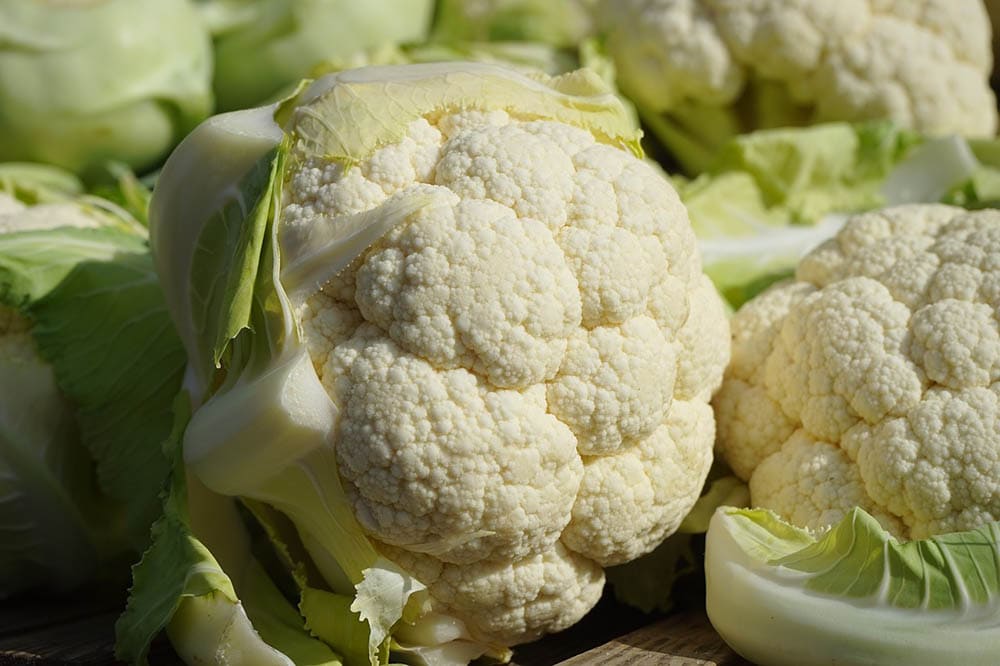
| Calories Per Cup: | 25 |
| Protein Grams Per Cup: | 1.98 |
| Carbohydrate Grams Per Cup: | 5.3 |
Cauliflower is known to help reduce the risk of heart disease and cancer, both of which become bigger threats once diabetes has developed. It is super low in calories, and it doesn’t have much of a taste, so it’s easy to sneak into a dog’s diet. Try roasting or steaming cauliflower, then mixing it with wet dog food in a processor for a healthy yet hardy snack.
Creating a Complete Meal Plan for Your Diabetic Dog
You can’t just feed your pooch fruits and veggies to fight their diabetes symptoms, as these foods don’t have nearly enough protein or other nutrients that are necessary for a canine’s good health. Your pooch must get a high-protein diet that includes all the micro and macro nutrients that they need to thrive.
Your veterinarian should be able to recommend a diabetes-friendly commercial food, or they might decide that prescription food is more suitable for your dog. Alternatively, they could connect you with a vet nutritionist who can teach you how to make healthy, nutritious homemade food that meets your dog’s unique needs.
Once you have established a healthy diet for your diabetic dog, you can start introducing a few of the human foods listed here into their diets, either as supplements or snacks. Regardless of what you pick, it should be just a small percentage of your dog’s overall diet.
- Determine proper dog food portions and ideal daily intake with our helpful calorie calculator here.
In Conclusion
Diabetic dogs can live happy lives just like any other dog if you address their condition and ensure that they get the care that is necessary for proper bodily function. Work with a trusted veterinarian to ensure your pooch’s health. Consider adding a few of these human foods the next time that you decide to offer your dog a treat!
Featured Image Credit: Pxhere

